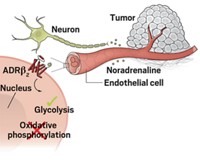Advertisement
Grab your lab coat. Let's get started
Welcome!
Welcome!
Create an account below to get 6 C&EN articles per month, receive newsletters and more - all free.
It seems this is your first time logging in online. Please enter the following information to continue.
As an ACS member you automatically get access to this site. All we need is few more details to create your reading experience.
Not you? Sign in with a different account.
Not you? Sign in with a different account.
ERROR 1
ERROR 1
ERROR 2
ERROR 2
ERROR 2
ERROR 2
ERROR 2
Password and Confirm password must match.
If you have an ACS member number, please enter it here so we can link this account to your membership. (optional)
ERROR 2
ACS values your privacy. By submitting your information, you are gaining access to C&EN and subscribing to our weekly newsletter. We use the information you provide to make your reading experience better, and we will never sell your data to third party members.
Biological Chemistry
Torpor on Demand
Mice exposed to H2S enter reversible state of suspended animation
by RON DAGANI
April 25, 2005
| A version of this story appeared in
Volume 83, Issue 17
METABOLISM RESEARCH
Hydrogen sulfide, a gas that is lethal at high concentrations, has been found--at lower levels--to induce a state similar to suspended animation in mice (Science 2005, 308, 518).
If the finding turns out to be applicable to humans, the researchers believe it could ultimately lead to better ways to treat cancer, prevent injury or death from insufficient blood supply to organs and tissues, and rapidly lower the core body temperature of patients with dangerously high fevers.
When Mark B. Roth of Seattle's Fred Hutchinson Cancer Research Center and coworkers exposed mice to H2S at 80 ppm, they found that the animals' O2 consumption and CO2 output dropped dramatically within five minutes. If left in this environment for six hours, the metabolic rate of the mice plummeted by about 90%, followed by a major drop in core body temperature.
Once the H2S was removed, the mice returned to normal and showed no signs of any ill effects, according to the researchers.
The mice were put into a hibernation-like state where cellular activity slows to a near standstill, Roth says. In this state, the animals' need for oxygen is greatly reduced. If this state could be duplicated in humans, he believes, it could buy time for critically ill patients awaiting organ transplants or other surgical procedures. For example, depressing metabolic activity might extend the period that organs and tissues could be preserved outside the body prior to transplantation.
The mechanism by which H2S acts on the metabolism isn't completely understood. But H2S is known to disrupt a critical step in oxidative phosphorylation, the process by which the cell generates metabolic energy.
Still, no one knows whether H2S will have the same metabolism-depressing effect in humans. Physiologist Rui Wang of Lakehead University, in Thunder Bay, Ontario, who studies the biology of H2S, believes it's far-fetched "to extrapolate this discovery to inducing human hibernation."
Roth stresses that the work is at an early stage and that his group next must show that some medical benefit can be garnered from putting a mouse into this hypometabolic state.





Join the conversation
Contact the reporter
Submit a Letter to the Editor for publication
Engage with us on Twitter